Ongoing - 35 Bienal de Sao Paulo Coreografías de lo imposible - Brazil
Reading time: 11 minutes

18.01.2024
What is the impossible? What is possible? What is choreography? How to name the impossible? How to imagine the possible? These were some of the questions that guided the kinetic exercise proposed for the 35th edition of the Sao Paulo Biennial, a call to the delirious crowds.
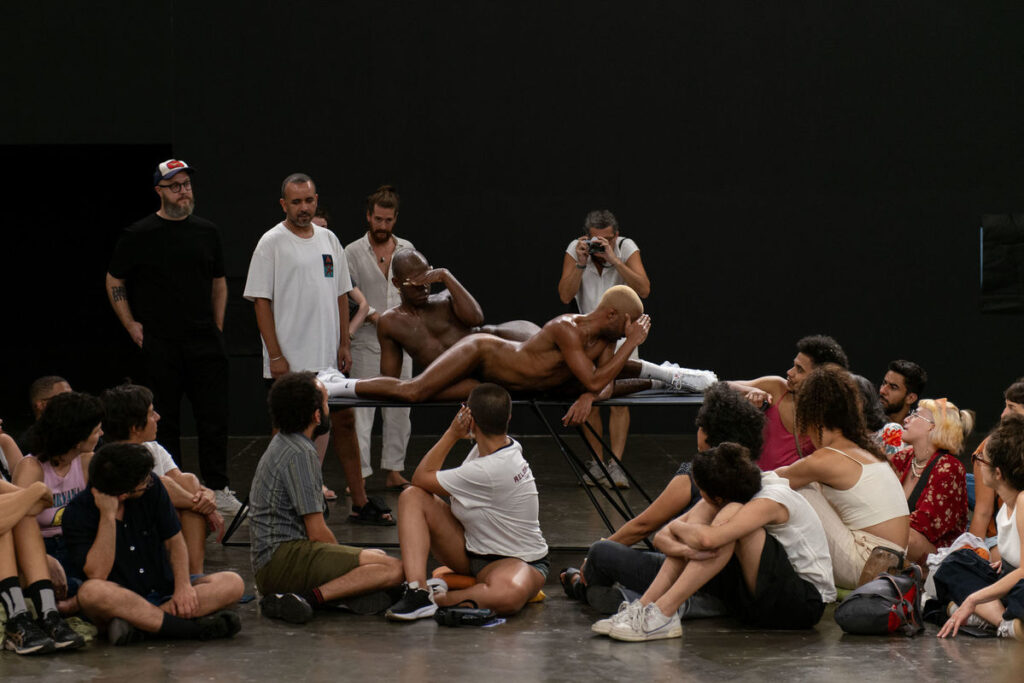
35th São Paulo Biennial
choreographies of the impossible
They told me: you can’t stand on the floor
Because the place of the head is on the shoulders.
The place of the body is in the body.
You can’t walk through walls either
You won’t be able to stay in the beds either.
You won’t be able to be in an empty space either.
Because the place of the head is on the shoulders.
The place of the body is in the body.
—Stela do Patrocinio
What if what is at stake around our movements is not politics but rather the emancipation processes that we can build in their environment? What if the political is once again being taken over by all the violent ways of laying out the scaffolding that makes up and shapes the world? What would it mean then to learn how to move politically? Where in the crossroads does it place us to think from a choreo-political possibility that escapes the idea of freedom in its most neoliberal meaning?
Who takes the risk of aestheticizing radicality? Where does one escape from the cruelty that the world-as-we-know-it sustains?
On December 10, the 35th edition of the São Paulo Biennial closed, curated by the team made up of Diane Lima, Manuel Borja-Villel, Helio Menezes and Grada Kilomba; Sylvia Monasterios and Tarsicio de Almeida as curatorial assistants, and a curatorial council mobilized by Omar Berrada, Sandra Benites, Sol Henaro and Thomas Lax. This complex of cultural actors/actresses were responsible for proposing a series of pedagogical possibilities for cognitive formation and infection from various kinetic moments, where the poetic slowed down the creation and centrality in the bodies that have been socio-historically constructed and defended from hegemony, those whose occupation of spaces in art is compulsively repeated. There where radical possibilities face the institutional crack that demands to be recovered by intense forms in which life manifests itself, forms that occupy, populate and decompose what was believed to be solid and immovable. Life manifests itself through the flows that reconfigure and decompose the fabrics of the old structure in the world of art and its industry, which is ready to disappear, or at least that is the desire that inhabits us. However, this exercise of decomposition is far from a performative statement; discourses are pointless when materiality is subordinated to violence and the precariousness of life.
A total of 121 artists were summoned to occupy the architectural intervention of the emblematic Ciccillo Matarazzo Pavilion located within the Parque do Ibirapuera. An intervention proposed by the curatorial team and executed by the Vão group of architects, which implied that the experience of the visitors would be joined to the visual choreography proposed for this edition. A decision that raised questions from the well-thinking and centralized white elite of Brazilian artistic endeavors. There are worlds that find economic losses in gestures of renunciation of the canon; others that simply feel instability as another discomfort to be denied and, therefore, not to be crossed.
The title of this edition, choreographies of the impossible, is articulated through the curatorial dialogue with the work of the Rio-born professor, philosopher and playwright Leda Maria Martins, who for years has been proposing a critical review of the performative experience, the body, time, memory and production of knowledge. Performance in spiralling time, poetics of the body-screen is the title of her most recent publication by the Cobogo publishing house.
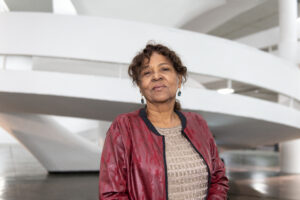
Professor Leda encourages us to go through the knowledge that is inscribed in the body, producing memory through what even she takes up as oraliture: oral tradition, the foolishness of telling each other and listening; what must be told and well heard among us far beyond the image to which the terms past, present or future can refer us. Because there is information that circulates to be heard, felt, vibrated, danced, cried and shouted beyond the configuration of this factory of subjectivities that are not very dreamy but very attentive to the demands of the market and its alienating ways of extracting value to reinforce commercial logic.
Helio, Grada, Diane and Manuel proposed going through this shared knowledge through kinetic moments curved in time and sustained in the expography of each of the works that are manifested by strategic ways of dealing with the impossible; violence in its partial and total forms, territorial displacement, extractivism, individualism, systematic extermination and cosmophobia. This edition, even though it has been chanted loudly and repeatedly, is not about decolonization; it is not the most de-colonial edition of the whitest biennial in one of the blackest and most indigenous territories – to say the least. It is a radical bet on the possibilities at play within the existences delimited by one’s world, sustained by the paradigm of humanness and forged from dispossession, plunder, extermination and invisibility — as Professor Aura Cumes says. It is what in capoeira is known as ginga: the swing to escape from what is about to approach. A contempt for programmed oblivion. The contempt for the modern program of understanding art, politics and aesthetics that spreads from there; a contempt for the reworking of ethics beyond brutalization. There are no performative statements that allow us to dilute the structures of violence; there are concatenated actions, radical proposals and, of course, collective renunciations of the naivety to which the de-colonial discourse and the subalternization of the gaze have subjected us.
Reducing the exercise proposed in choreographies of the impossible to the sole intention of decolonization and its paraphernalia is to allow ourselves to be captured by representativeness, the false escape and the limiting imagination — paradoxically colonized. And yet, leaving all responsibility for structural changes in the hands of a single event is once again reactivating the colonial positions that exempt us from all responsibility in the coming together of this and other worlds. I wish we could take this opportunity to renounce —once again— critical naivety.
For this reason, the contradiction that aggressively pushes us into the abyss expanded and prefabricated by the world of art is present in the air, simulating that the limits are found under its own consuming logic. There, where the pamphletary positions of anti-racism and de-colonial fashion for galleries fit; where the artist as ethnographer makes sense as a(n) (im)possibility to deal with the difference; where affective kidnapping is part of the scaffolding of one’s world, thus preventing criticism, and that is where the capture returns us to the starting point; in that same place where there are even those who masturbate with the idea of community. In that same place where contradiction finds us, the escape is projected and becomes present before our eyes.
How to deal with the solidity of the institution and its coercive ways of materializing? How to dilute the forms of precariousness perpetrated by [not only] cultural institutions?
How to move politically even within the cultural industry? If institutions are not made only of bricks, but also of people who are affected, how do we build a politics of affects that allows us to break the chain of structural violence that sustains sociability in our different contexts?
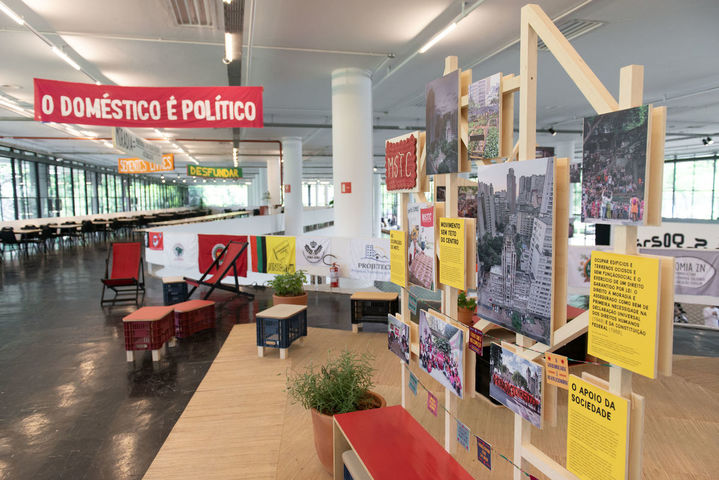
The strategies for survival and construction of collective dignity are, in principle, a good starting point, as proposed and inhabited by Cozinha Ocupação 9 de Julho, created in 2017 and belonging to the MSTC or Movimento dos Sem Teto do Centro [Downtown Homeless People’s Movement] —a collective movement of occupation that for more than 20 years has been demanding better conditions in access to housing and a decent life, proposing forms of resistance based on socialized, shared and collectivized care. Transmuting not only dreams, discourses, words and actions, but also transmuting the scaffolding of coloniality, as if it were a Parlamento de fantasmas [Parliament of ghosts], just as Ibrahim Mahama (Ghana, 1987) proposes in the installation that welcomed us into the emblematic building of the São Paulo Biennial Foundation, the work of the Ghanaian artist clings to the material possibilities that allow recomposition beyond failure, error and the denial of the existence of black populations, that which modernity has attributed to formerly colonized territories —some of them still under direct colonial yoke—; train tracks, traditional Ghanaian pots, bricks and red clay that also functioned as a stage for a large part of the movements articulated by the educational program of the Biennial. A parliament for continued disobedience.
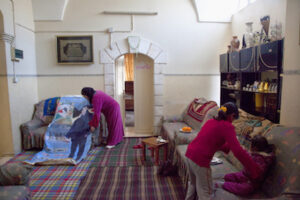 Where is the failure in this choreographic experiment? Speaking with the curatorial team, Diane told me that one of the challenges they embraced from the beginning was to develop movements in which violence was not central. This makes me think of the work of Ahlam Shibli (Palestine, 1970), Death n. 48, a photographic series in which death becomes the main object, the testimonial record of the partial and total violence exercised by the genocidal and colonial state of Israel. Shibli proposes a cartography of the brutalization located in the Palestinian territory, pecking at the viewer’s sensitivity, allowing photography to once again go far beyond death but not genocide. Ahlam causes us to become indigested with the colonial state; the possibility of life in the face of the demand for dignity and the recovery of stolen lands.
Where is the failure in this choreographic experiment? Speaking with the curatorial team, Diane told me that one of the challenges they embraced from the beginning was to develop movements in which violence was not central. This makes me think of the work of Ahlam Shibli (Palestine, 1970), Death n. 48, a photographic series in which death becomes the main object, the testimonial record of the partial and total violence exercised by the genocidal and colonial state of Israel. Shibli proposes a cartography of the brutalization located in the Palestinian territory, pecking at the viewer’s sensitivity, allowing photography to once again go far beyond death but not genocide. Ahlam causes us to become indigested with the colonial state; the possibility of life in the face of the demand for dignity and the recovery of stolen lands.
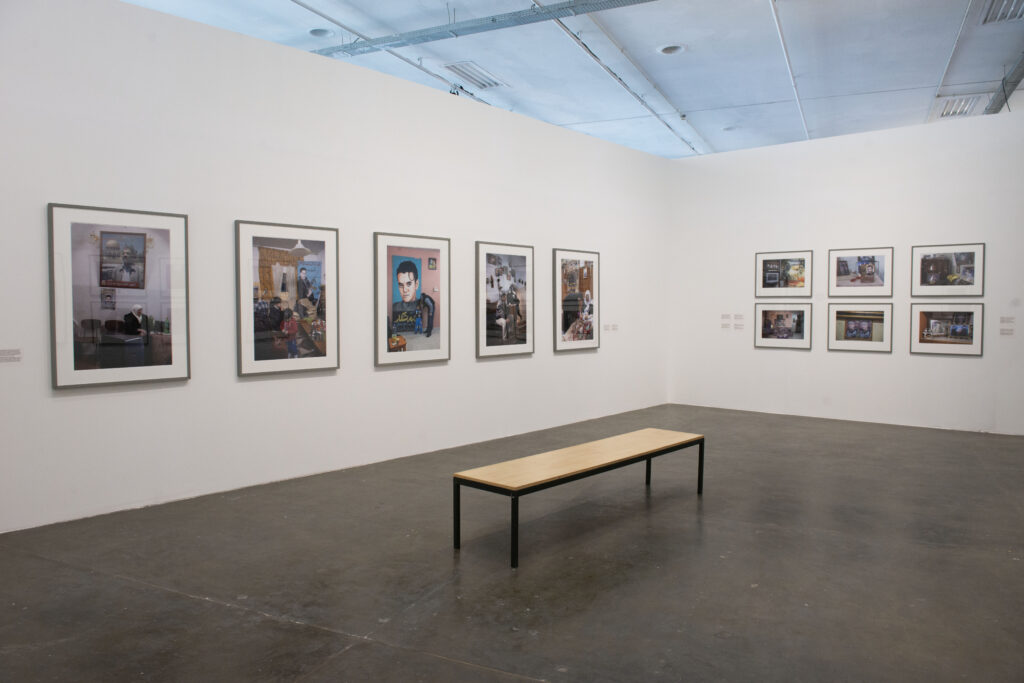
This same claim for dignity is what is present in the poetic work of the artist Aline Motta (Brazil, 1974), who in her book A água é uma maquina do tempo [Water is a time machine], expands on the question: “Is it possible to create new bonds of kinship, new lineages or even a new filiation?” Motta invites us to what the Brazilian psychologist and filmmaker Angela Donini calls excavating the ruins of the living body; recomposing (with family vestiges) and going through the decomposition of the wound from the genealogies of one’s own experience to embrace other forms of memory, as well as radical experiences of accompaniment. Those other forms of memory that also make up the exercise presented by the Trans Memory Archive (AMT, for its initials in Spanish) of Argentina: photographs, videos, newspaper and magazine clippings about the trans population in Argentina; a space of inscription in time founded by activists Maria Belen Correa and Claudia Pia Baudracco, a direct dialogue with their own historical struggle.

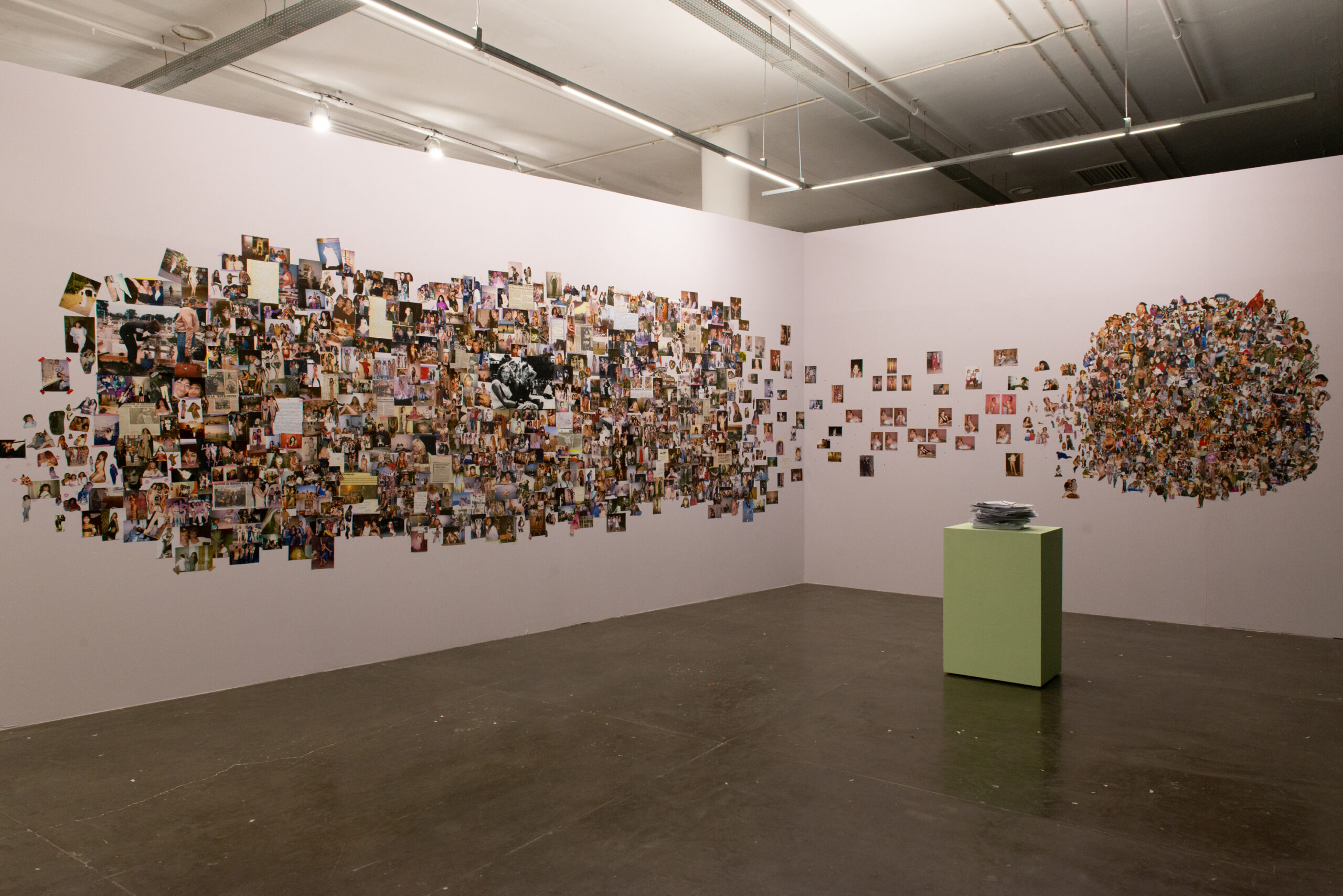
Movements that are sustained by the challenge, the direct confrontation with colonial fictions sustained by the idea of identity, nationality and, of course, raciality (as one of the most successful inventions of modernity), also reworking different forms of understanding and relating to freedom. The Museu ficticio dos objetos roubados pela policia [Fictitious Museum of Objects Stolen by the Police], by Castiel Vitorino Brasileiro (Brazil, 1996), is the perfect essay on abandonment, the ruins of the social structure and its legal implications within the colonial framework and the racializing device. This same challenge is present in Delirar o racial [Racial Delirium], a piece of choreo-political research by Davi Pontes (Brazil, 1990) and Wallace Ferreira (Brazil, 1993), in which they propose to experience the symbolic deflection of violence programmed by the State and the institutions in charge of maintaining order through repression. How do we create self-defense choreographies?, Pontes and Ferreira ask themselves while they make repetitive movement a tool for rethinking the perception of time-space.

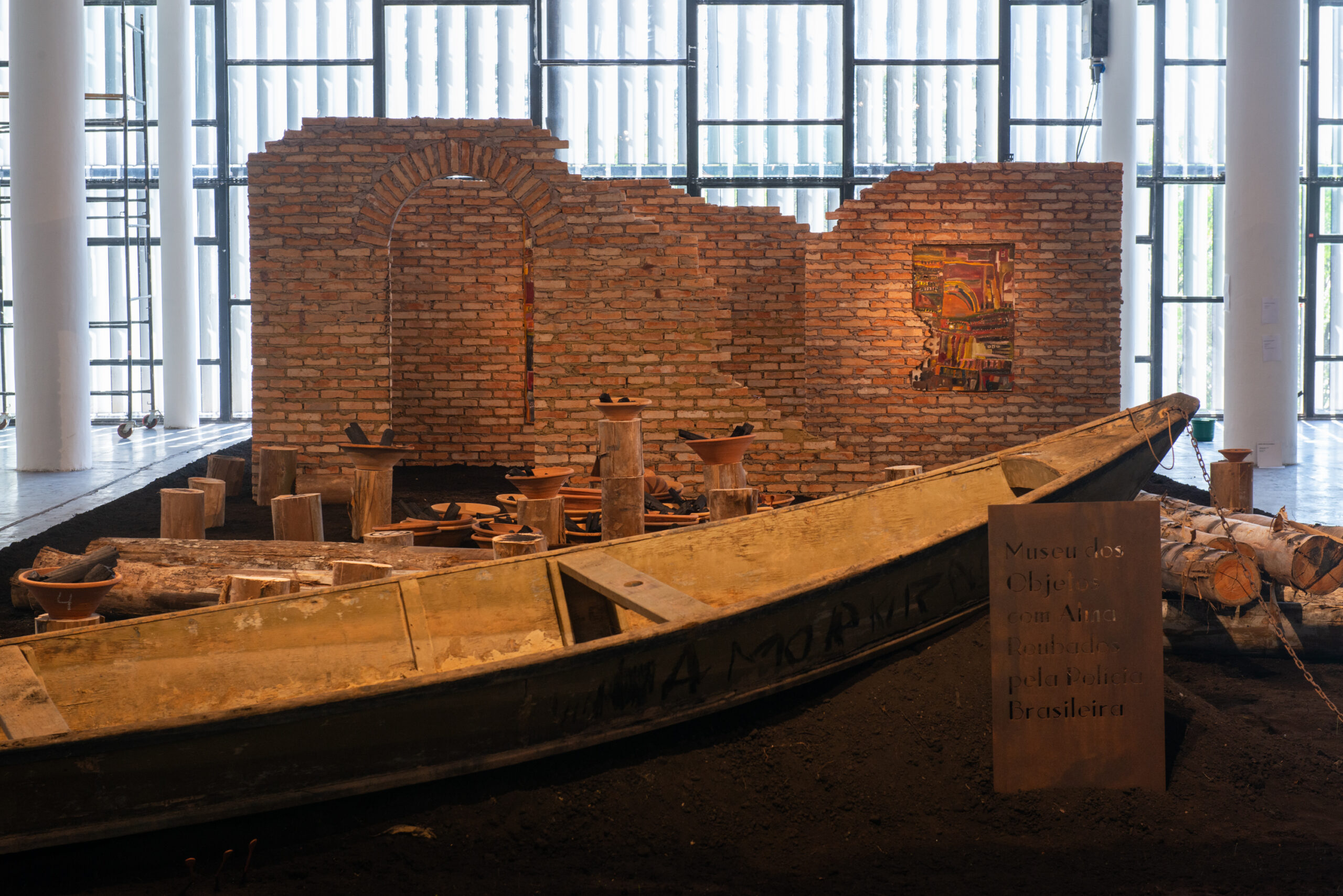
The decomposition present in Outres [Others], work by Daniel Lie (Brazil, 1988), proposes thinking about the transmutation of organic matter based on a constant interaction between organisms almost imperceptible to the human sight, the opportunity to overcome the binarity constructed between life and death, the collusion between the movement and the interaction between the different presents that manifest as other forms of death that are not the end. Taking as a starting point the importance that imagination has for the outline of emancipatory processes, thinking about unprecedented ways of inhabiting what is possible, we find Sauna Lesbica [Lesbian Sauna] by Malu Avelar with Ana Paula Mathias, Anna Turra, Berbara Esmenia and Marta Supernova (Brazil), an installation project that, on the one hand, puts on the table the ideas constructed a priori in relation to what we understand as safe spaces for disobedient corporalities of the sex-gender system; while, on the other, it elaborates and sustains criticism of the partriarchal and misogynistic structure that continues to contain the spaces of leisure and erotic recreation within the LGBTITTQ+ acrostic.
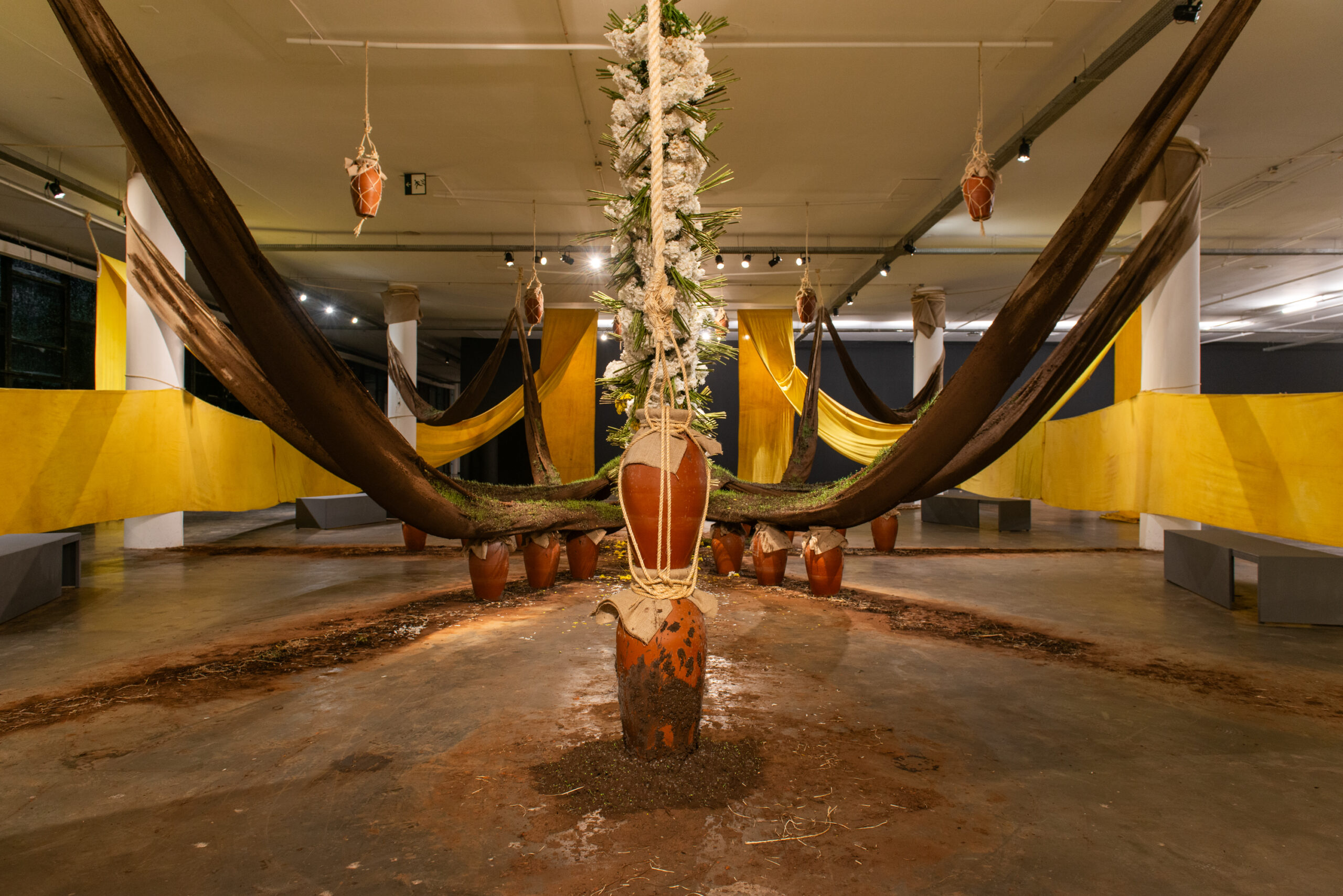
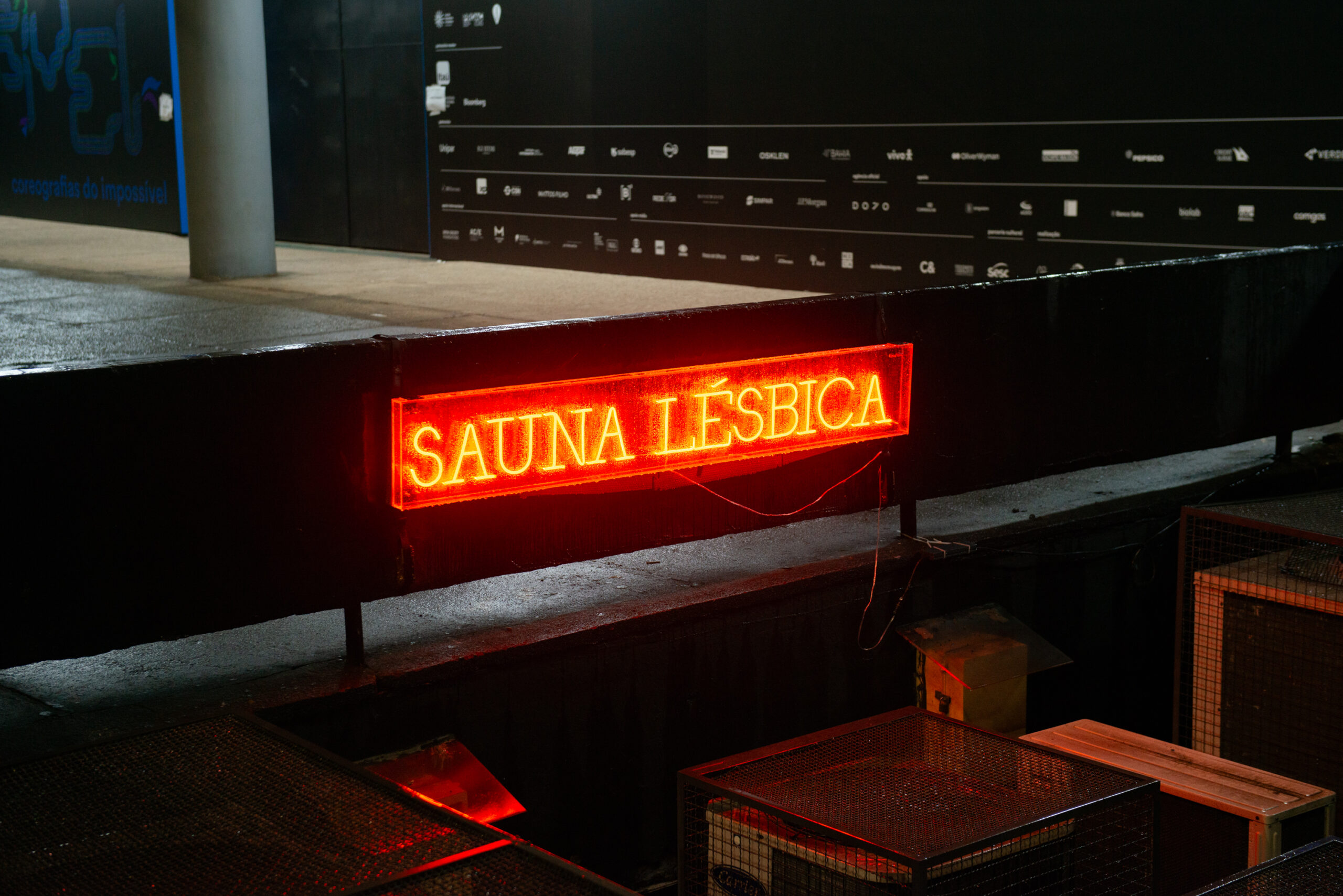
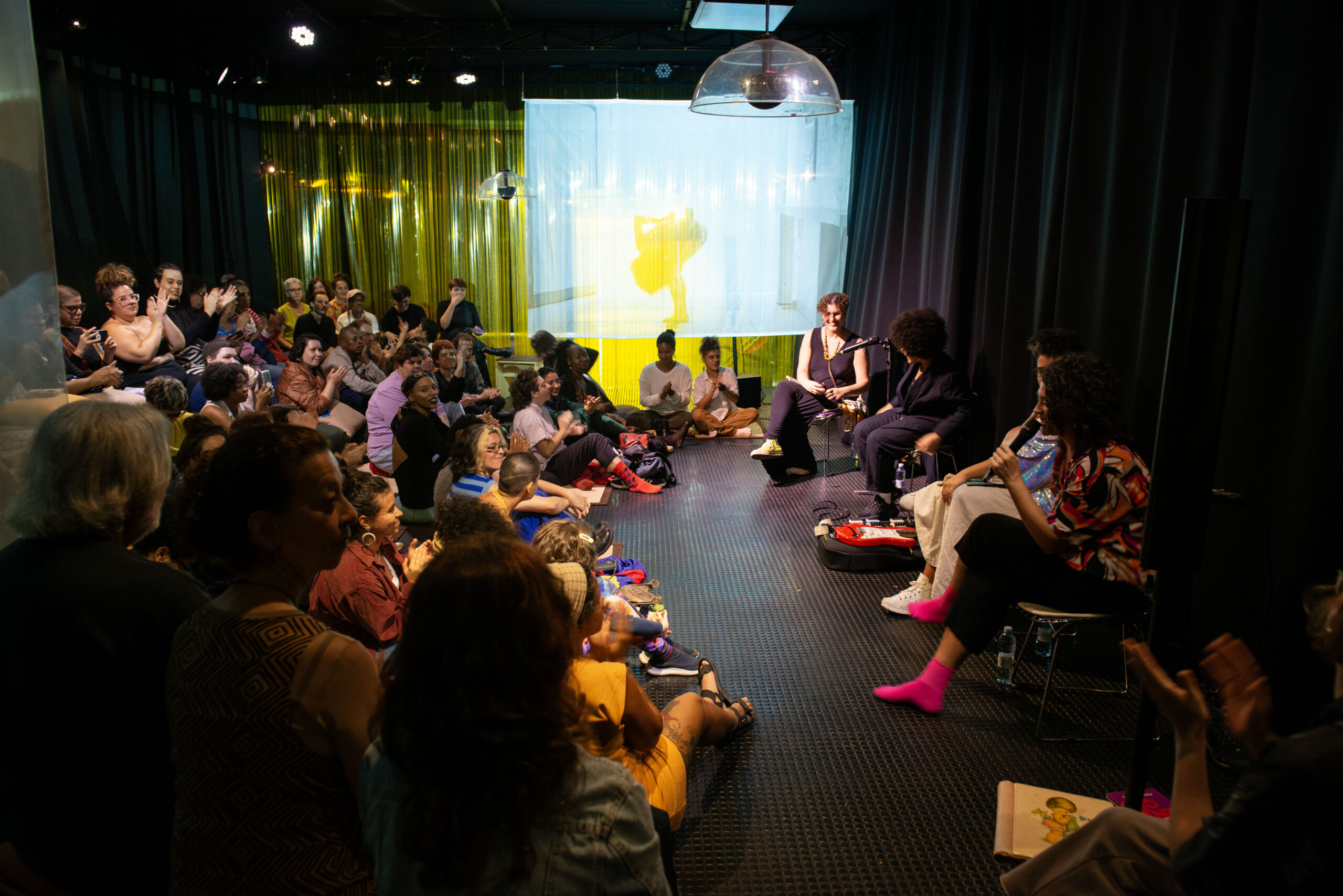
There are several echoes that will resonate over time, and that seems to me to be one of the great successes of the 35th edition of the São Paulo Biennial. Bringing more questions without the intention of continuing to answer as if it were a compulsion to make truths or false promises. Thinking about the conjunction of aesthetic proposals, somatopolitical tools and affective possibilities to dismantle the structures of subjectivation under the logic of colonial fictions.
Quoting Diane Lima: “What is the size of the capacity for radical and expansive imagination to assume the impossible as a realized moment?” Once the impossible is realized, from where do we rally to embrace the delusions that sustain even the choreography of what the anthropological perspective determines within the field of art — but not exclusively?
If we do not learn to move politically, we run the risk of losing, once again, the opportunity to experience radical forms of possibility, where ethics demand attention to the vital forces that surround us.

Comments
There are no coments available.